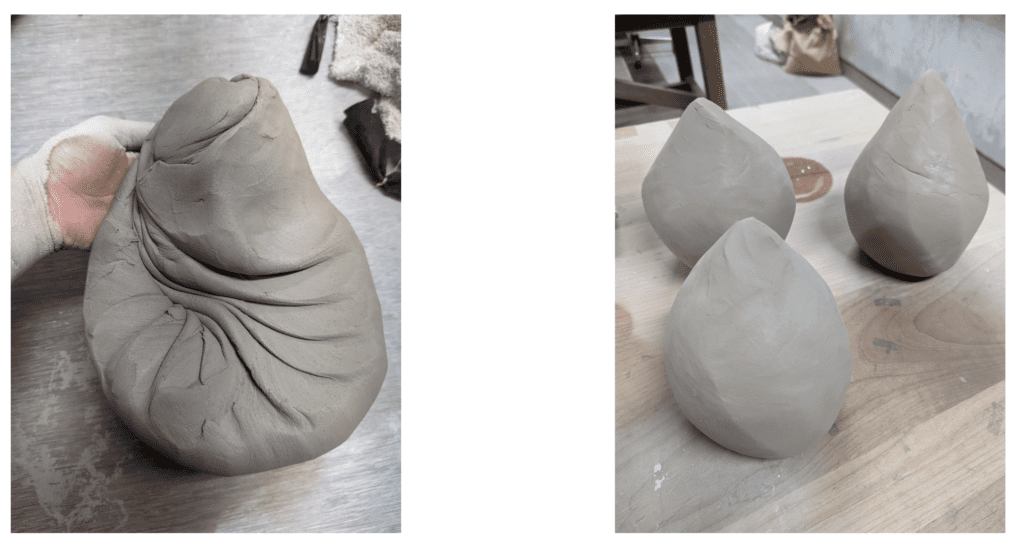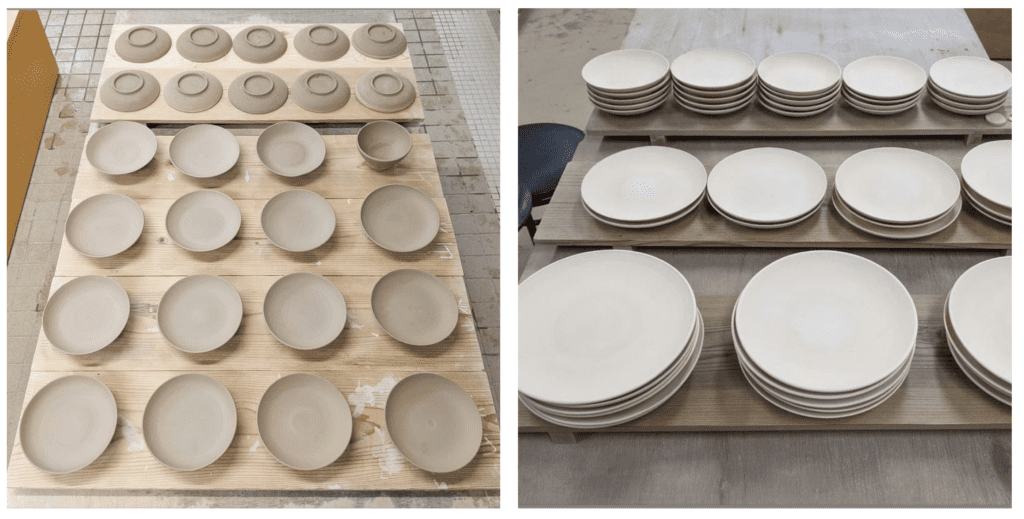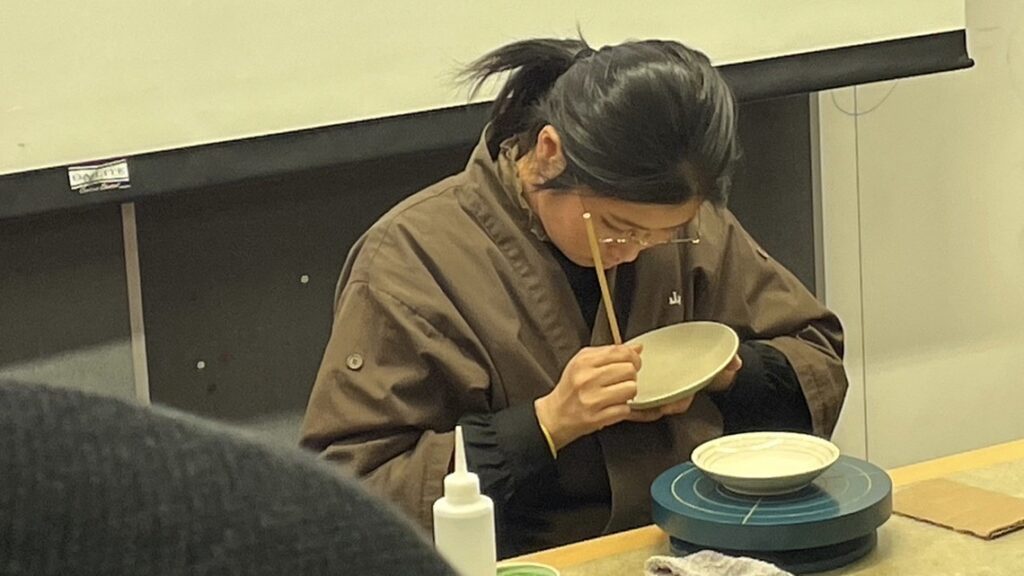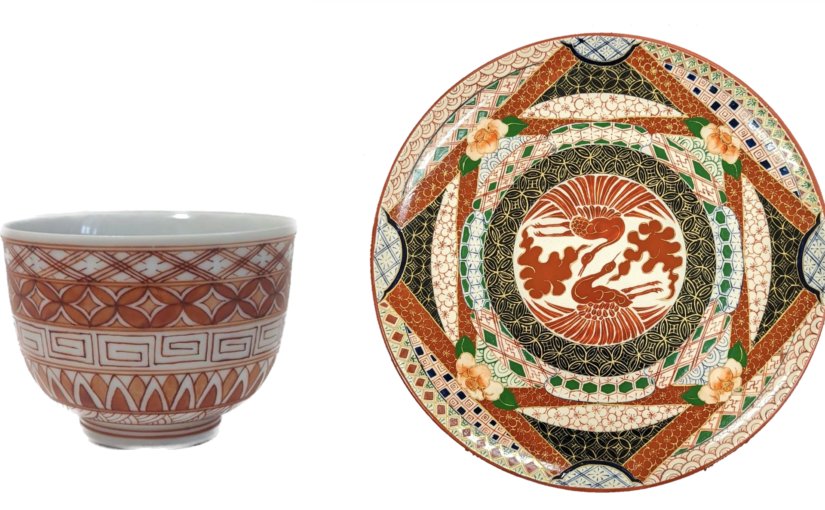Presentations of Two Youngsters from Kyoto Awed Me – 1
The week in Seattle has indeed become in their words, a life-changing experience for the two TASK students from Kyoto, Japan. I’m relieved and happy to hear that. The daily snapshots of their visit appear on the TASK website.
The highlight for me was the presentations they conducted at Seattle University on the 6th day. The audience, mostly design students as well as faculty members, were highly impressed by the skill and precision of the TASK students.
I got permission from the students to share their slides with you here. I will try my best to accurately summarize their presentations in English on this blog site.
Japanese Ceramic Art by Rena Yamamoto

“Hi everyone! I’m Rena, a senior at Traditional Art Supercollege of Kyoto (TASK). I’m studying ceramic art.”

“I believe people’s ultimate goal is happiness. And when do people feel happy most often in everyday life? When having meals with their loved ones! I want to create beautiful plates and bowls to be used for their meals… That’s the reason why I decided to study ceramic art.”
Start with Tools, then Clay

“The first thing my teacher taught us at TASK was not how to make ceramics. Rather, he taught us how to make tools to make ceramic objects. He said, ‘It all starts with making your own tools that perfectly fit your hands. Skip this process and you will never create anything great.’

“The next thing I learned was how to knead clay. Chrysanthemum kneading, as it’s called, because of the pattern shaped from the process. This kneading is critical to eliminate any air bubbles from the clay.
We practiced this kneading process for three months. Only after mastering this process can we finally sit in front of the potter’s wheel.”
Repetition is Shortcut to Mastery
(Rena showed a video of her kneading the clay and “throwing” plates on the potter’s wheel.
Here is a video of Rena kneading clay on Instagram.
Here is a video of Rena throwing plates on Instagram. Using the tools she made on her own, she shapes the plates with such high precision.)
The assignment was to throw as many as 100 of them. Repetition is crucial to master the craft.”

“After throwing plates on the potter’s wheel, the process continues.
- Let them dry for a day
- Shape the bottom with the metal tool we made ourselves
- Dry them for a week (see the photo on the left above)
- Fire them in a kiln at a lower temperature (950 °C /1742 °F) for 3 days or until the water is completely evaporated from the clay (see the photo on the right above)
- Apply the glaze evenly
- Fire them in a kiln at a higher temperature (1250 °C /2282 °F). It takes about 4 days to cool down.

“Next it’s time to paint the design on the surface. You boil the gelatine in a pot and apply the hot gelatine on the surface with the cloth. The gelatine is like the glue that holds the colors of the paint.”

“The paint we use is dry powder. You add medium to make it liquid. You keep on mixing until the paint has a consistent texture, for at least ten minutes.
I will demonstrate how I apply paint on the surface shortly. Let me show you some of the works I made at TASK so far.”

“The photo on the left above is a tea bowl I made when I was a sophomore. The assignment was to master several Japanese traditional patterns by repeating the process.
The one on the right is my recent work. Based on the traditional motifs, I designed and painted from scratch. It took me three months to complete five plates.”

“I made the one on the left in my freshmen year.
I like goldfish! I want to depict their graceful figures with fine lines. As shown in the photo on the right, my latest focus of the study is drawing lines with precision.”
Demo Time
Rena then moved from the podium to the desk situated in the center of the classroom. She first displayed her two plates. While the audience was looking closely at her work, impressed by the beautiful and meticulous design, Rena placed tools to be used for demonstration: A turner, paint brushes, a pallet of paint already mixed with medium, and plates with gelatin coating on them.
She placed a plate on the turner and started spinning it. Once the spin of the plate became stable, she picked up the brush, applied a little of the paint, and started creating the thin circle closer to the rim.

Although many people were present, the classroom was totally quiet. Everybody’s attention was solely on Rena. Rena, understandably, got nervous at first. But by the time she took off her shoes and crossed her legs on the chair, her razor-sharp concentration kicked in.

